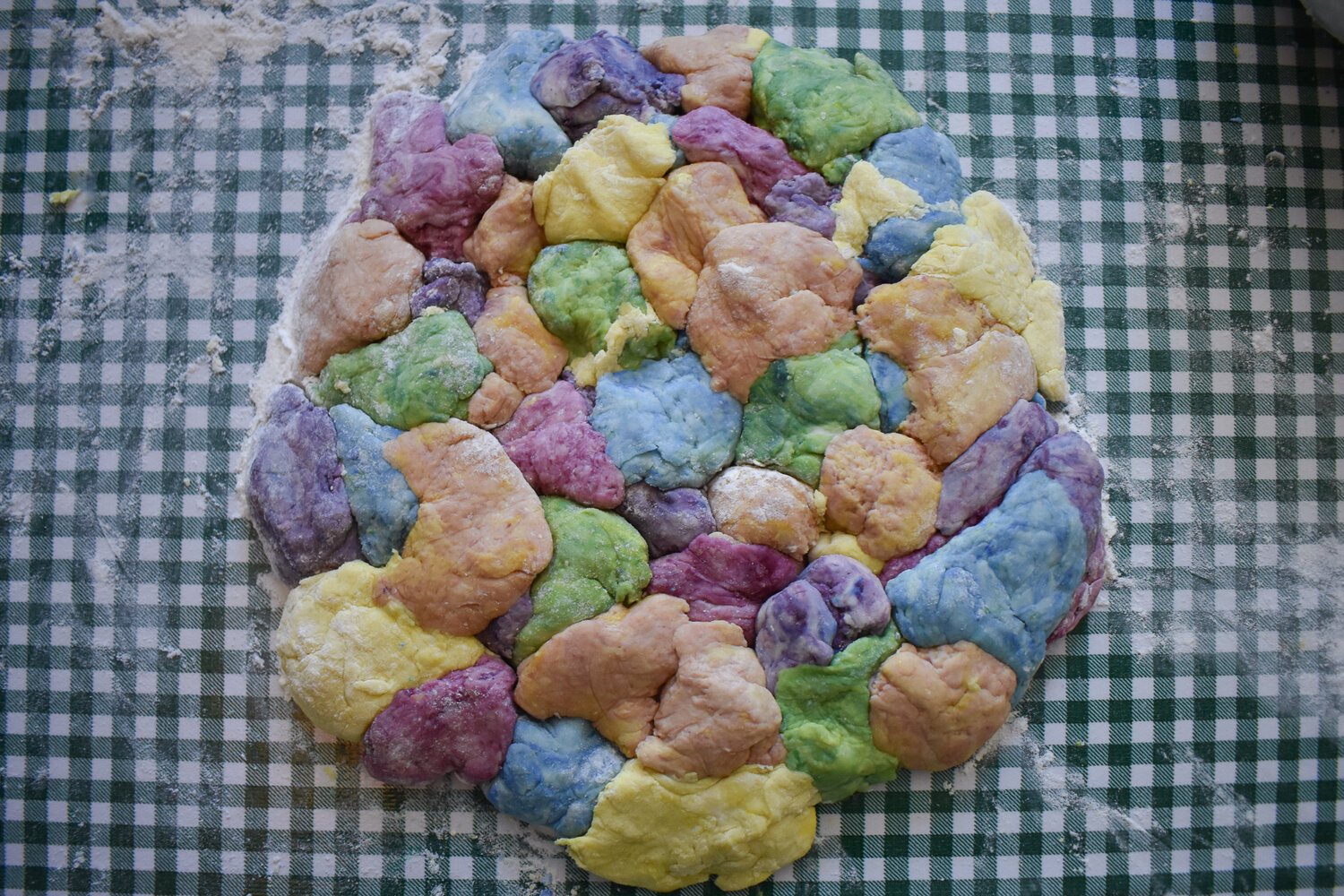Rainbow Bannock
“Kôhkum laughed. “It’s okay, nôsism, we can make some more. Together!””
Every civilization in the world has a form of bread and the Indigenous peoples of North America are no exception. While the bannock we know has its roots in Scotland, “bannach” being the Scottish Gaelic word for morsel, many pre-colonial First Nations groups were already baking an unleavened bread using camas root (an important source of carbohydrates in a diet rich in protein), or flour made from the rhizomes of ferns. These were baked on stones placed on hot coals, in clay ovens, or wrapped around green sticks placed above the fire.
When the Scottish brought their similar version with them to North America, they also brought wheat flour, which made a longer-lasting product. First to adopt the new ingredient was the Métis community, and it spread throughout North America from there. Now nearly every First Nations community has a version of bannock. The recipes differ from community and family to the next, but all have the same basic ingredients: flour, a fat, salt, a liquid, and a leavening agent. While bannock can still be cooked over an open fire, popular amongst campers, it is usually baked or fried.
In honour of National Indigenous History Month we decided to make the bannock recipe from Awâsis and the World-Famous Bannock, by Dallas Hunt, illustrated by Amanda Strong. The story is about a girl who is tasked by her Kôhkum to take fresh-baked bannock to a relative. On the way there Awâsis accidentally drops the bannock in a river. With the help of some animal friends, Awâsis gathers the ingredients needed to make Kôhkum’s famous bannock. In the recipe below we have included the Cree words for the ingredients as listed in the story.
In honour of Pride Month, we decided to make it rainbow-coloured.
Rainbow Bannock (Pahkwesikan)
Ingredients
½ cup margarine (tohtosapopimehkan) (we used butter because that is what we had in the museum fridge)
2 ½-3 cups flour (askipahkwesikan)
1 ½ TBSP baking powder (opihkasikan)
1 TBSP sugar (sîwinikan)
1 tsp salt (sîwihtâkan)
1 ½ cups milk (tohtôsâpoy)
Steps
Preheat oven to 400°F.
In a large mixing bowl, combine all ingredients. Mix with hands. Add more flour if dough is too sticky.
Divide dough into six equal portions. Knead a few drops of food colouring into each portion. Wear gloves to avoid staining hands.
Break the dough into small chunks and randomly spread them out onto a flour-dusted surface. Squish the pieces together then knead two or three times so they become a cohesive ball of dough. Roll out on a flour-dusted surface to approximately half an inch thick.
THE DOUGH RIGHT BEFORE IT WAS KNEADED TOGETHER
Use a biscuit cutter or the opening of a glass to cut out individual pieces.
Poke top of bannock with the back of a spoon.
Bake for 20 minutes or until the tops begin to brown.
Share with your friends!
You can buy Awâsis and the World-Famous Bannock at Massy Books here.
Happy National Indigenous History Month, and Happy Pride!



